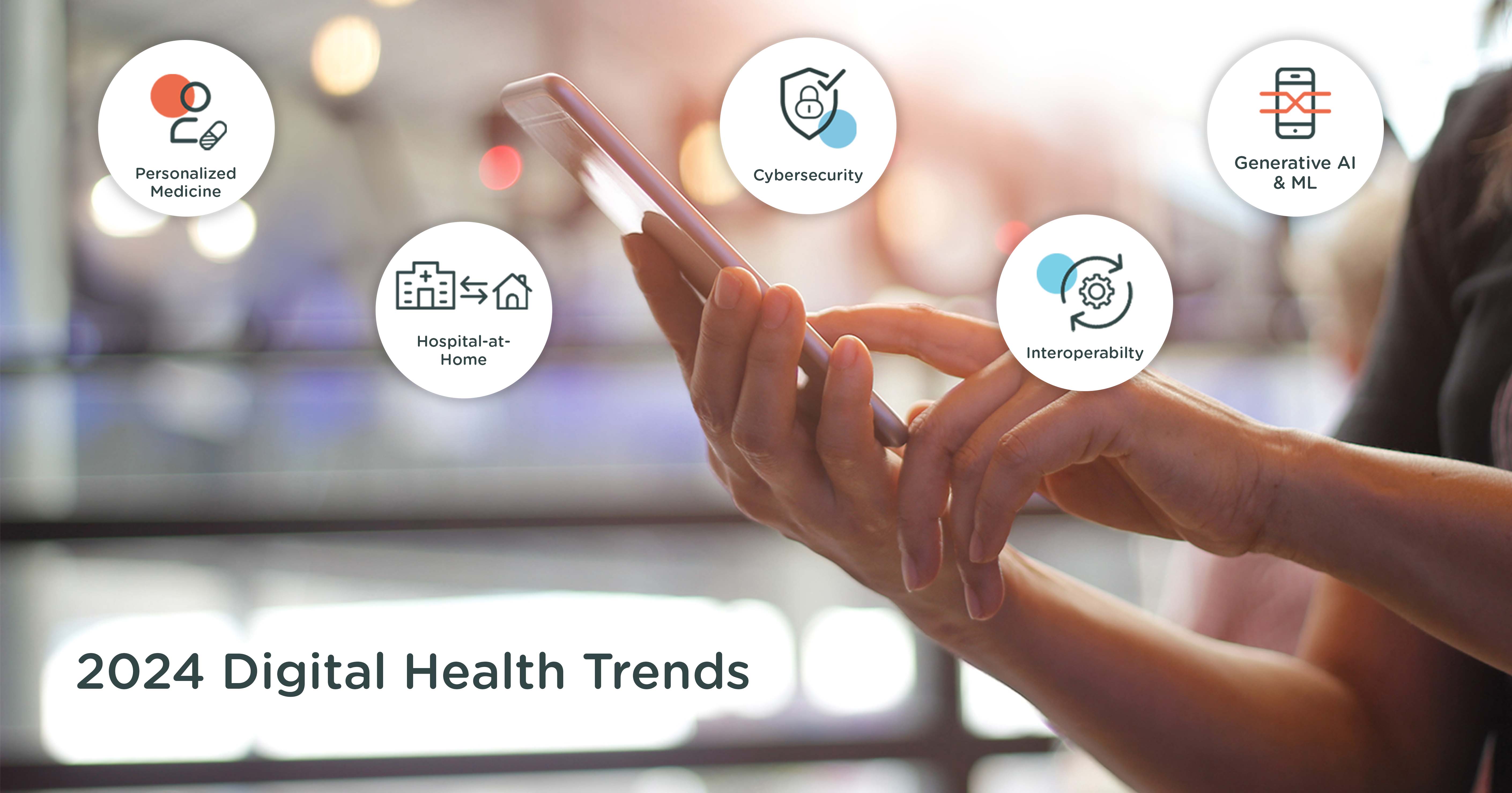Several key trends are expected to shape the landscape of digital health in 2024. From the growing significance of artificial intelligence to the increasing demand for personalized healthcare, these trends offer healthcare providers and patients new possibilities for improving healthcare delivery, enhancing patient outcomes, and fostering innovation. In this article, we explore some key digital health trends we expect to emerge in 2024.
AI and ML in Healthcare
AI will continue to be a key healthcare trend into 2024 and beyond, with Global Data’s Generative AI in the Medical Devices Sector Report predicting that the market for the technology to be worth $908.7bn by 2030.
To combat modern global healthcare challenges - such as staff shortages, data overload, workflow inefficiency, and limited access to care - innovative solutions are needed more than ever. By extracting valuable insights from vast amounts of data, Generative AI has the potential to revolutionize healthcare systems by providing actionable insights, empowering patients, and optimizing operational and administrative functions.
AI can also play a vital role in diagnostics and treatment plans by quickly analyzing vast datasets, helping healthcare professionals identify patterns, and making more accurate diagnoses. Machine learning algorithms can aid early detection of diseases and personalize treatment plans based on an individual's genetic makeup, lifestyle, and medical history. This trend marks a shift towards more precise and targeted healthcare interventions.
Increased Scrutiny on Cybersecurity in Digital Health
As the digital health ecosystem expands, the need for robust cybersecurity measures becomes increasingly crucial. With the vast amounts of sensitive health data being transferred and stored digitally, healthcare organizations must prioritize cybersecurity to protect patient privacy and maintain the integrity of medical information. In 2023 Section 524B Amendment of the FD&C Act, ‘Ensuring Cybersecurity of Devices’ came into effect. The requirements include submitting a plan for monitoring and addressing post-market cybersecurity vulnerabilities, providing updates and patches, maintaining the device's and related systems' cyber security, and sharing a software bill of materials. Meanwhile, the EU is publishing the EU AI Act, which will require an Intended Use Statement and a Risk-based approach to software that medical device manufacturers must adopt.
Hospital at Home Movement Will Continue to Grow
The Hospital at Home movement will continue to grow in 2024, reshaping the traditional model of healthcare delivery. Enabled by advanced telehealth technologies, patients can receive hospital-level care in the comfort of their homes. This approach not only enhances patient comfort but also reduces the strain on traditional healthcare facilities, freeing up resources for critical cases. Remote patient monitoring, teleconsultations, and in-home diagnostics contribute to the effectiveness of the Hospital at Home model, offering a viable alternative for certain medical conditions and treatments.
Advances in Personalized Healthcare
Advances in genomic medicine are driving the trend towards personalized healthcare, which is expected to continue in 2024. The decreasing cost of genomic sequencing has made it more accessible, enabling healthcare providers to analyze patients' genetic information and tailor treatments based on their unique genetic makeup. Personalized medicine allows for more effective and targeted interventions, reducing adverse effects and improving overall treatment outcomes. As our understanding of genetics deepens, this trend will become increasingly central to preventive care and disease management.
Focus on Interoperability
Interoperability is crucial for creating a connected and collaborative healthcare ecosystem and yet there are still huge strides to make in this field. Interoperability is critically important for several reasons, all of which contribute to improving patient care, increasing efficiency, and fostering innovation within the healthcare ecosystem. It allows healthcare providers to access comprehensive and up-to-date patient information from different sources, provide continuity of care to their patients, and reduce the administrative burden on HCPs by facilitating the exchange of information between different healthcare entities. As the healthcare industry continues to evolve, interoperability will remain a cornerstone for achieving a more effective and patient-centered healthcare system.
The digital health landscape is constantly evolving, and the trends expected to emerge in 2024 and beyond offer exciting possibilities for life science companies. By embracing these trends and leveraging innovative technologies, healthcare providers can improve healthcare delivery, enhance patient outcomes, and foster innovation in the healthcare industry.
To talk to our team of digital health experts on how we can help you with your 2024 digital health initiatives, get in touch with us today.


